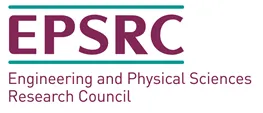The Centre focuses on the science and engineering of medical imaging. The Centre is one of the largest centres for medical imaging research in Europe and was established in 2017 through a £12m award from the Wellcome Trust & Engineering and Physical Sciences Research Council. We are based within the School of Biomedical Engineering & Imaging Sciences at the St Thomas’ Hospital campus and also include the Department of Neuroimaging (IOPPN)
The Centre combines fundamental research in engineering, physics, mathematics, computing, and chemistry with medicine and biomedical research. The 400 inter-disciplinary scientists in the Centre are transforming the diagnosis and treatment of patients, and will deliver exceptional research.
We improve outcomes for patients with neurological, cardiovascular and oncological conditions by bringing together over 400 world-class scientists, engineers, clinicians and healthcare professionals to deliver impactful research.
We focus on:
- Providing infrastructure support to the School of Biomedical Engineering & Imaging Sciences and Department of NeuroImaging
- Clinical translation of advances in basic science research, with both first‐in-man studies and studies demonstrating clinical efficacy
- Fostering our talented Early Career Researchers and supporting innovative and multi-disciplinary research through fellowships and pump priming awards
- Embedding patient and public engagement in the Centre’s research
Addressing key clinical challenges: Our Clinical challenges are to improve the treatment and outcomes of
- Neurological & psychiatric disorders
- Cardiovascular conditions
- Cancer
Using our research themes: These challenges are underpinned by cutting edge research in 4 themes
- Computer science
- Chemistry
- Physics & Engineering
- Interventional Engineering
To fulfil our aims to provide:
- Better treatment
- Better diagnosis
- Improve lives
Our Partners

The Engineering and Physical Sciences Research Council (EPSRC)
Evelina Children's Heart Organisation

Science Gallery London

